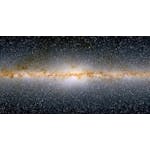Description
Archaeoastronomy is defined as the "science of stars and stones." It is a science that combines architecture, archaeology, and astronomy. It investigates the relationships between ancient monuments and the sky in order to gain a better understanding of the architects' ideas as well as their religious and symbolic world. The course is the first complete, easy-to-understand introduction to this fascinating discipline.
Many spectacular ancient archaeology sites will be visited during the course, including Stonehenge in England, Giza and Karnak in Egypt, Chichen Itzá in the Yucatan, Macchu Picchu in Peru, and the Pantheon in Rome, and the fascinating events that occur there on special days of the year (such as solstices, equinoxes, or the day of the foundation of Rome) will be shown and explained. The course also provides the necessary background on Astronomy with the naked eye, as well as a general introduction to the role of Astronomy in religion and power management in ancient cultures.
Syllabus :
1. Week 1
- Archaeoastronomy: the science of stars and stones
- The celestial coordinates and the apparent motion of the Sun
- The constellations and the apparent motion of the stars
- Precession and the reconstruction of ancient skies
- Sightseeing with an archaeoastronomer's eye
2. Week 2
- Astronomy and architecture: a very early connection
- Archaeoastronomy in action: hierophanies and sacred landscapes
- The places where Archaeoastronomy was born: Stonehenge
- The places where Archaeoastronomy was born: Newgrange
3. Week 3
- The stellar destiny of the Pharaohs
- The Great Pyramid and the stars
- The horizon of Khufu
- Karnak, Abu Simbel and the Egyptian calendar
- The Amarna heresy and the horizon of the Aten
4. Week 4
- Maya astronomy and calendar
- Chichen Itza and the Serpent Equinox
- The Inca pillars of the Sun
- Macchu Picchu
5. Week 5
- The first emperor and the Terracotta Army
- The pyramids of ancient China
- Angkor Wat
- Between sun and waters: the temples of the Khmer heartland
6. Week 6
- Houses of the Gods: the Greek temples of Sicily
- Aosta and Augustus' power from the stars
- Astronomy and empire at the Pantheon in Rome
7. Astronomy insights
- Archaeoastronomy is not only "speaking about the Sun and the other stars". Interest in the cumbersome, apparent motion of the Moon and in the alternating behaviour of Venus as morning star/evening star is also present in ancient architecture, for instance in the Americas. This section provides the tools needed to investigate in such cases, as well as insights on the physical effects affecting measures in Archaeoastronomy.









